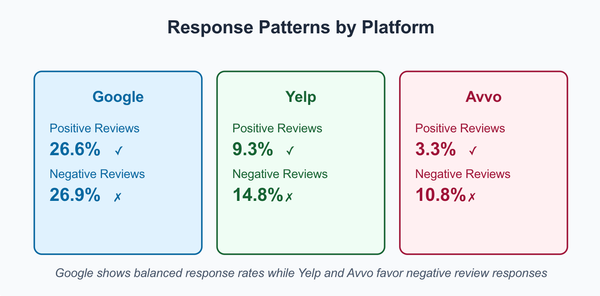Child Custody Battles in California: Legal Insights and 2024 Trends

Child custody disputes are some of the toughest legal challenges parents go through. In California, the main goal behind these cases is always to ensure what’s best for the child while keeping up with the changing family situations. As California child custody battles unfold, it’s essential to stay informed about the legal processes and trends that impact these cases.
This blog explains the basics of child custody laws in California, points out recent changes, and offers useful advice for handling these cases. Whether you’re starting the process or want to refresh your knowledge, this guide will help you understand California’s legal system.
Understanding California Child Custody Laws
Child custody laws in California are designed to prioritize the best interests of the child. Custody is categorized into two main types:
- Physical Custody: Defines where the child will live and how time is shared between parents.
- Legal Custody: Involves decision-making authority over key aspects of the child’s life, such as education, healthcare, and religious upbringing.
Both physical and legal custody can be either joint (shared by both parents) or sole (granted to one parent). California courts generally favor joint custody arrangements to ensure both parents actively participate in their child’s life. If parents cannot agree, a judge will decide based on what is in the child’s best interests. These decisions are particularly relevant in California child custody battles, where courts emphasize the child's needs.
How is Legal and Physical Child Custody Different?

When parents separate or divorce, determining custody arrangements is a crucial aspect of ensuring the child’s well-being. Custody is typically divided into two key components: legal and physical. Each plays a distinct role in shaping how parents share responsibilities and time with their children. Here is the overview below,
Legal Custody
Legal custody involves a parent’s right to make important decisions about the child’s upbringing. Sole legal custody allows one parent to make these decisions independently, while joint legal custody requires both parents to collaborate. Judges often specify situations requiring mutual consent to prevent conflicts, such as selecting schools or medical treatments. In other areas, each parent may act independently.
Physical Custody
Physical custody determines where the child lives and who handles daily care. Sole physical custody means the child primarily resides with one parent, while the other parent may have visitation rights. Joint physical custody ensures the child spends significant time with each parent. This arrangement works best when parents live near each other to minimize disruptions to the child’s routine, such as schooling or activities.
Going through a child custody battle or divorce? Explore our platform for the best divorce lawyers near you!
Key Statistics on California Child Custody Cases: Latest Data
In this context, it's important to explore how these statistics reflect broader national patterns, joint custody prevalence, mediation's role in resolving disputes, and the financial pressures that many custodial parents experience. The following figures provide a closer look at California's state of child custody.
- Nationwide, 79.9% of custodial parents are mothers, compared to 20.1% of fathers.
- Over 50% of California custody cases result in joint custody arrangements.
- Only 4% of cases proceed to trial, with most resolved through mediation.
- Approximately 30.1% of custodial parents live below the poverty line, underscoring the financial pressures tied to custody disputes.
Latest Trends in California Child Custody: What’s New?
California custody laws 2024 are continually evolving to reflect the best interests of children and the realities of modern parenting. As we step into 2024, key trends highlight a growing emphasis on collaboration, the use of technology, and continuous evaluations of parental roles. This overview explores the latest developments shaping child custody decisions in the Golden State, offering insights for parents facing California child custody battles 2024.
1. Emphasis on Comprehensive Co-Parenting Plans
Courts are increasingly prioritizing making detailed parenting plans to ensure a child’s emotional and physical well-being. A co-parenting plan in California includes provisions for:
- Daily routines and schedules.
- Holiday and vacation arrangements.
- Communication protocols between parents and the child.
- Study and future decisions
2. Using Co-Parenting Technology
Technological tools like co-parenting apps and virtual visitation platforms are playing a bigger role. These tools streamline communication, manage schedules, and help parents navigate custody arrangements effectively. Judges often consider a parent’s willingness to embrace technology when making custody decisions, particularly in California child custody battles 2024.
3. Greater Scrutiny of Parental Fitness
Parental fitness assessments continue to influence custody outcomes. Courts examine factors such as:
- Evidence of domestic violence or abuse.
- Substance use history.
- Stability in providing a nurturing home environment.
How Courts Determine the Child’s Best Interests?

In California, courts determine a child's best interests by considering a range of factors that support their well-being and development. These factors include:
Child's age, health, and emotional needs
Courts assess the child’s physical, emotional, and developmental needs to ensure they are met in a stable and nurturing environment.
The strength of the bond with each parent
A child’s relationship with both parents is a critical factor in decisions about custody or visitation. Courts consider how each parent has been involved in the child's life.
Stability in living arrangements and schooling
Stability is key to a child's well-being, so the court evaluates the consistency of their living situation, schooling, and social connections.
Each parent's caregiving capacity
This includes the ability of each parent to provide for the child’s basic needs, including food, shelter, education, and emotional support.
Evidence of abuse, neglect, or substance misuse
If there is any history or evidence of abuse, neglect, or substance abuse, the court will factor this into its decision, prioritizing the child’s safety and protection.
Child’s preference
If the child is old enough and able to express a reasoned preference, their wishes are taken into account, though the court will weigh this alongside other factors.
How Do Parenting Time Orders in California Work?
In California, parenting time (or visitation) refers to the time a non-custodial parent spends with their child. The state outlines four types of visitation orders in custody cases:
- Scheduled Visitation: This type of visitation sets specific days and times for when the non-custodial parent will have time with the child. These are predefined and fixed arrangements.
- Reasonable Visitation: This allows the parents to agree on flexible visitation schedules based on what works for both parties, giving more freedom and adaptability.
- Supervised Visitation: In cases where there are safety concerns, such as issues with abuse or neglect, the court may require the visitation to happen under the supervision of a third party. This ensures the child's safety during visits.
- No Visitation: In extreme cases, if contact between the non-custodial parent and the child poses harm or danger to the child’s well-being, the court may order no visitation.
Dealing with child custody or divorce issues? Browse our platform for top divorce lawyers in your state!
Challenges in California Custody Battles

Custody battles in California can feel overwhelming, can’t they? It’s not just about legal paperwork—it’s about emotions, family dynamics, and making decisions that are best for your child. Let’s take a closer look at some of the common challenges parents face during this process and how they can impact your journey.
- High-Conflict Disputes: Custody battles often become intense when parents disagree over physical (where the child lives) and legal (who makes important decisions for the child) custody. These conflicts can drag on, causing emotional distress and financial strain for everyone involved.
- Economic and Cultural Disparities: Financial difficulties are a significant challenge for custodial parents, especially those with low incomes, as they may struggle to provide the necessary resources for their children. Additionally, cultural differences between parents may influence how they approach parenting, which can affect custody decisions.
- Changing Family Structures: With the rise of nontraditional family structures, such as unmarried parents living together, courts in California are adjusting their approach to custody cases to reflect these changes. The goal is to ensure that custody laws remain inclusive and flexible in accommodating the evolving nature of families in 2024.
Practical Tips to Get Fair Results in Custody Disputes
Looking for ways to make child custody disputes in California a little less stressful? It’s all about staying focused on what’s best for your child while keeping the conflict to a minimum. Here are some practical tips to help you navigate the process and work toward fair outcomes for everyone involved.
- Improve Communication: By having open, honest, and respectful conversations with the other parent, misunderstandings can be avoided, and both parents can work together for the child's welfare. Healthy communication reduces the likelihood of escalating disputes.
- Document Everything: Keeping a record of interactions, expenses, and any issues related to the child creates a factual history. This can be helpful in court if needed to demonstrate patterns of behavior or ensure fairness in the custody arrangement.
- Utilize Mediation: Mediation is a process where a neutral third party helps both parents work out a custody agreement without going to court. It’s less formal, often quicker, and can preserve a cooperative relationship between parents, which is better for the child's long-term well-being.
- Seek Legal Counsel: Consulting a family law attorney ensures you are fully informed about your legal rights and options. An attorney can offer tailored advice and guide you through the legal process, ensuring that your interests and the child’s needs are protected.
Wrapping Up
Child custody cases in California are adapting to the changing needs of modern families and the role of technology. By emphasizing co-parenting, using technology wisely, and staying up-to-date with 2024 trends in California child custody, parents can help provide a stable and supportive environment for their children.
Cooperation and preparation are essential in resolving conflicts and prioritizing children's well-being. Lawyers Rating.fyi connects you with top legal professionals to help navigate California child custody battles 2024. Sign up today to get the best legal support on your journey to justice.





